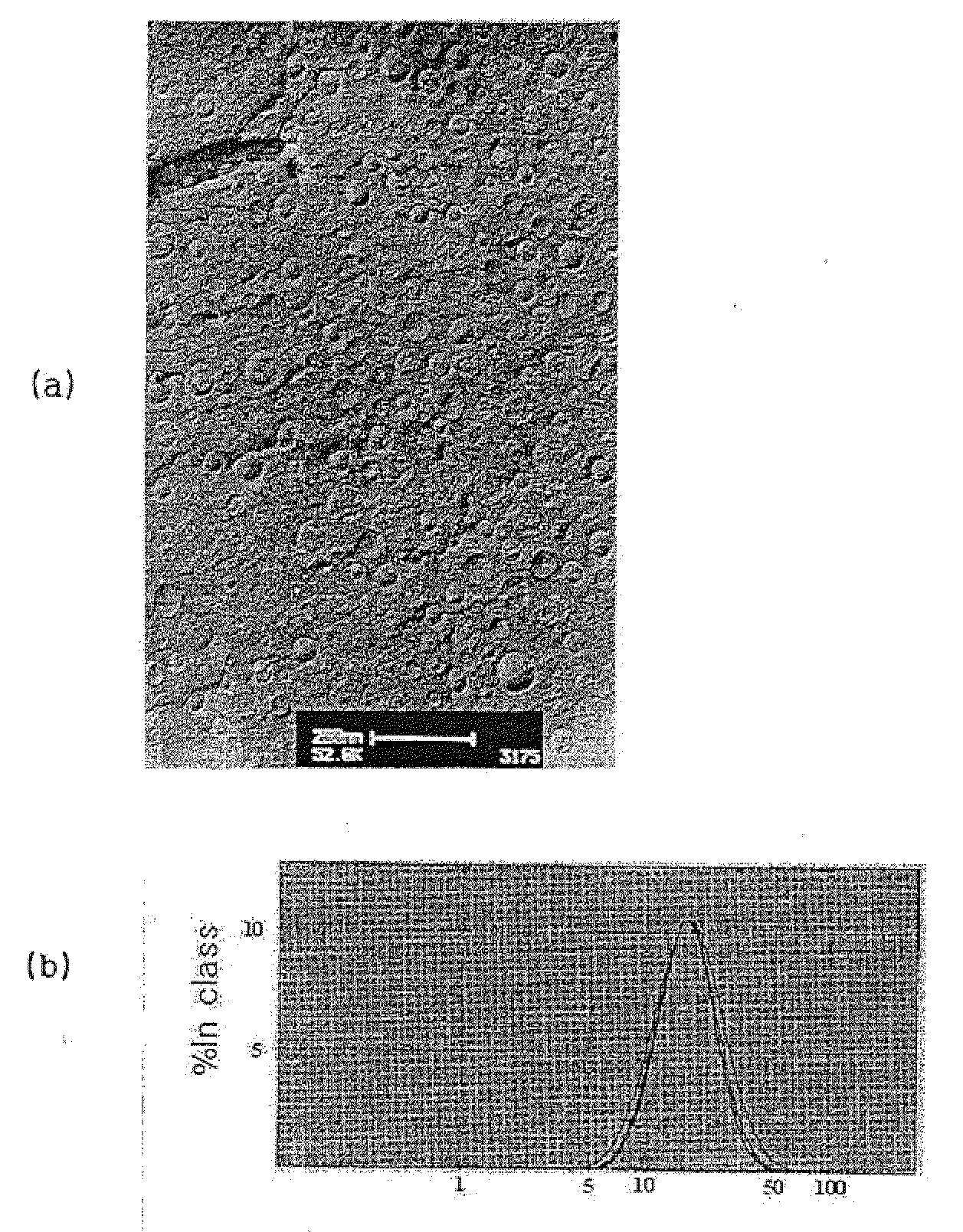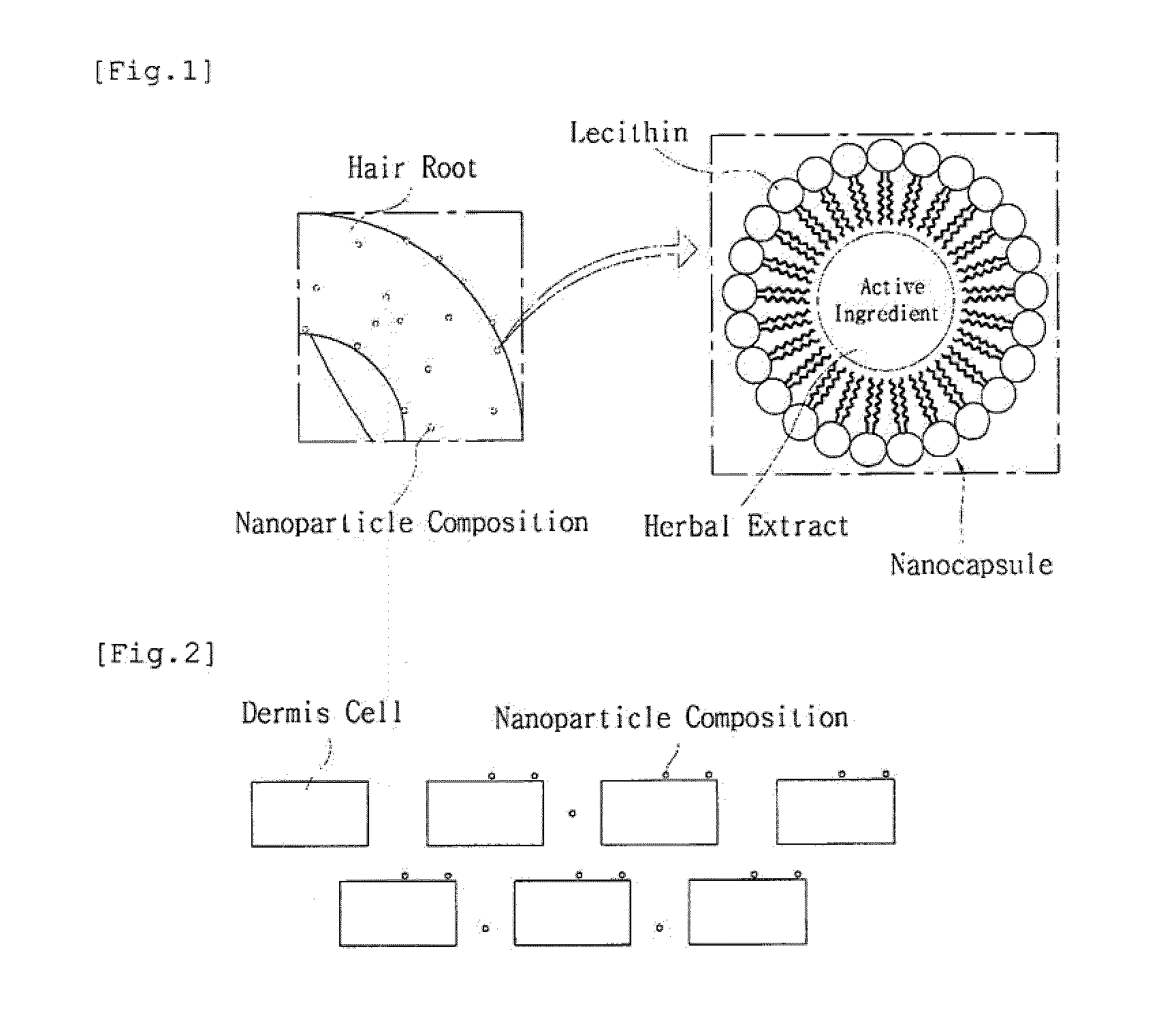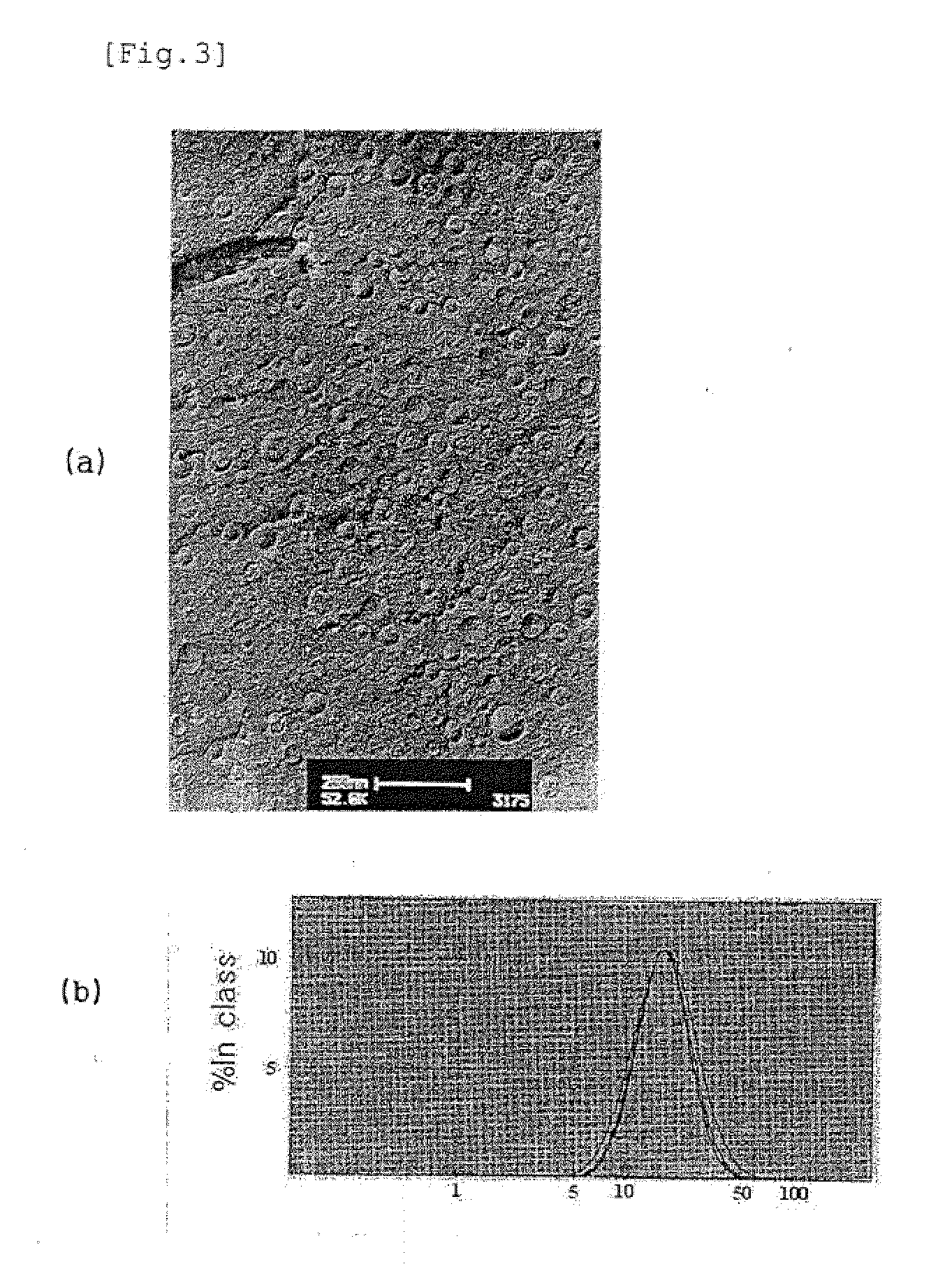Nanoparticle composition for prevention of hair loss and promotion of hair growth
- Summary
- Abstract
- Description
- Claims
- Application Information
AI Technical Summary
Benefits of technology
Problems solved by technology
Method used
Image
Examples
example 1
[0023]A first mixture was made by combining 9˜10% by weight of a Salvia miltiorrhiza extract, 9˜10% by weight of a safflower extract, 10˜12% by weight of a Zanthoxylum piperitum extract, 10˜12% by weight of a Torilis japonica fruit extract, 12˜14% by weight of a Cnidium officinale Makino extract, 5.5˜6% by weight of a green tea leaf extract, 5.5˜6% by weight of a pomegranate extract, 7˜8% by weight of pine tree leaf extract, 1.5˜2% by weight of a red ginseng extract, 1.5˜2% by weight of a ginseng extract, and 17˜18% by weight of an Angelicae extract. Separately, a second mixture was prepared from 91% by weight of distilled water and 9% by weight of a vitamin mixture of nicotinamide and tocopherol acetate. The first and the second mixture were combined with each other at a weight ratio of 4:6 to produce an admixture.
[0024]Then, the admixture was filtered through a 100-mesh filter to remove impurities and large particles. The filtrate thus obtained was again passed through a 0.8 μm fi...
example 2
[0052]A dry material comprising 6 parts by weight of Salvia miltiorrhiza, 1 part by weight of ginseng, 7 parts by weight of Zanthoxylum piperitum, 6 parts by weight of safflower, 12 parts by weight of Angelicae, 8 parts by weight of Cnidium officinale Makino, 4 parts by weight of a pomegranate shell, 4 parts by weight of green tea leaves, 7 parts by weight of a Torilis japonica fruit, 1 part by weight of red ginseng, and 3 parts by weight of pine tree leaves was mixed with water at a ratio of 1:10, and the mixture was boiled at 80˜90° C. for 3˜4 hrs. The supernatant was allowed to stand at room temperature.
[0053]The extract thus obtained was mixed with 6 parts by weight of a vitamin mixture and then passed through a 100-mesh filter to remove impurities and large particles therefrom. The remaining filtrate was filtered through a 0.8 μm filter and a 0.45 μm filter sequentially to afford a nanoparticle extract.
[0054]Afterwards, the nanoparticle extract was mixed with soybean lecithin a...
PUM
| Property | Measurement | Unit |
|---|---|---|
| Temperature | aaaaa | aaaaa |
| Length | aaaaa | aaaaa |
| Length | aaaaa | aaaaa |
Abstract
Description
Claims
Application Information
 Login to View More
Login to View More - R&D
- Intellectual Property
- Life Sciences
- Materials
- Tech Scout
- Unparalleled Data Quality
- Higher Quality Content
- 60% Fewer Hallucinations
Browse by: Latest US Patents, China's latest patents, Technical Efficacy Thesaurus, Application Domain, Technology Topic, Popular Technical Reports.
© 2025 PatSnap. All rights reserved.Legal|Privacy policy|Modern Slavery Act Transparency Statement|Sitemap|About US| Contact US: help@patsnap.com



